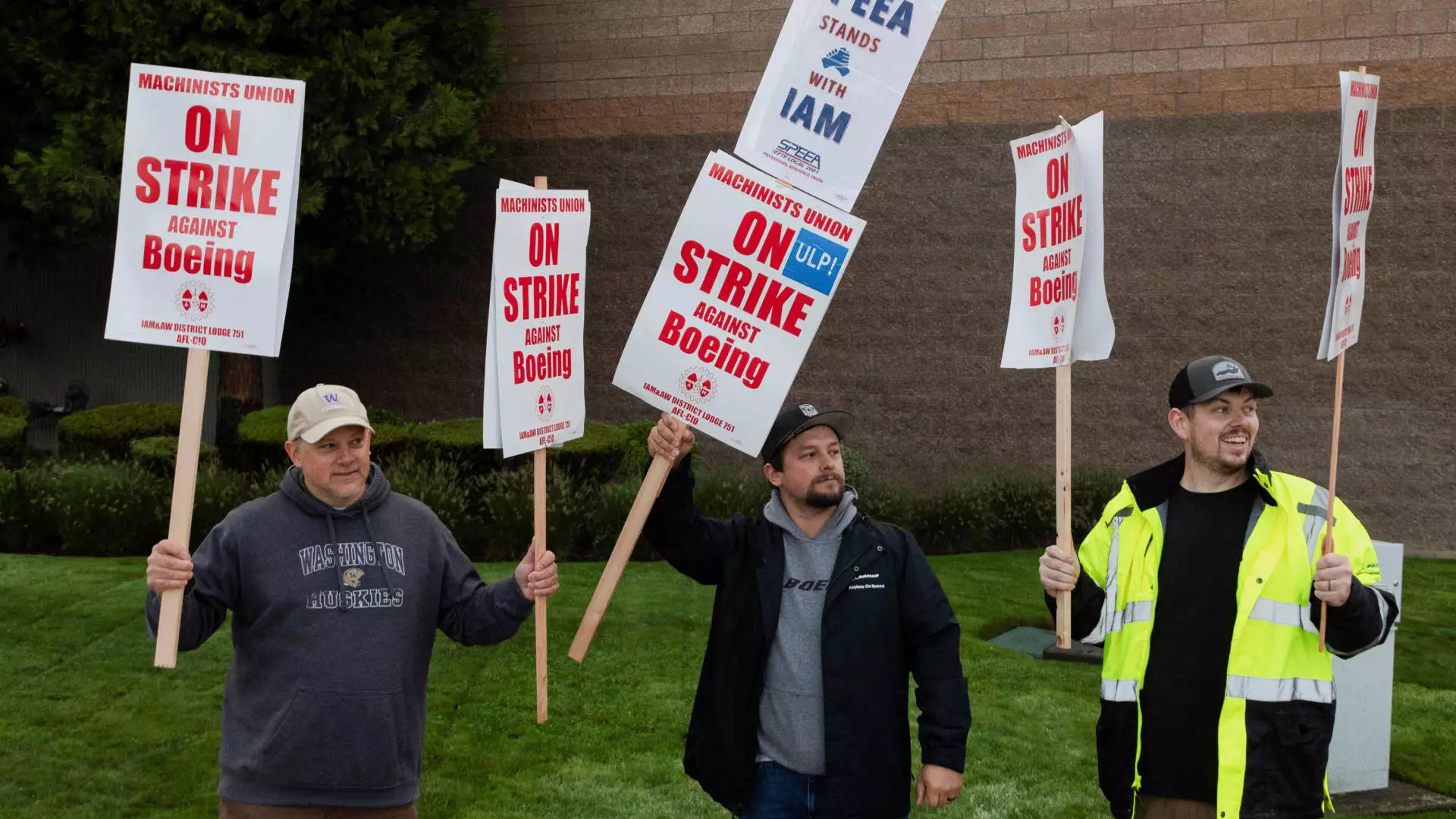Boeing is an iconic player in the aerospace manufacturing industry, yet its path has been tumultuous recently due to safety crises and production setbacks. The latest challenge to its stability comes in the form of a labor strike initiated by factory workers who overwhelmingly rejected a proposed labor contract. This significant strike action commenced just after midnight on a Friday, marking a potential turning point that could further jeopardize Boeing’s recovery trajectory. The company’s Chief Financial Officer, Brian West, has publicly articulated concerns over the fallout, emphasizing that prolonged labor unrest threatens to undermine aircraft deliveries and financial health.
Boeing’s recent labor unrest comes at an inopportune time as the company seeks to bounce back from a series of financial crises. West indicated that the impact of the strike would largely hinge on its duration, drawing attention to the production line of Boeing’s bestselling 737 Max model, the lifeblood of the company’s revenue stream. Even a temporary halt could have substantial financial repercussions, which Jefferies aerospace analyst Sheila Kahyaoglu estimates could peak at a staggering $1.5 billion if the strike lasts for 30 days. As the labor disagreement reverberated through the market, their stock plummeted nearly 4%, prompting credit rating agencies like Moody’s and Fitch Ratings to reconsider Boeing’s credit ratings, which could elevate borrowing costs during an already precarious financial situation.
The workers’ decision to strike follows the overwhelming rejection of a tentative labor agreement that included a 25% wage increase over four years. Notably, these workers were seeking an increase of 40%, reflecting heightened cost-of-living concerns amid a backdrop of economic uncertainty. The high rate of dissent among the workforce—94.6% voted against the terms of the new contract, while an even larger 96% favored the strike—mirrors deep-rooted dissatisfaction with current financial arrangements and a desire for more substantial improvements. This reflects not only a fight for better wages but an urgency for fair representation and acknowledgment of inflation’s impact on their livelihoods.
A Complex Landscape of Challenges
Boeing’s strike isn’t merely a labor issue; it unfolds against a complex backdrop of ongoing structural challenges. The aerospace sector has been grappling with difficulties in ramping up production capacity and shedding previous safety crises. A notable incident involving a door plug blowout on a new 737 Max 9 model prompted federal regulators to restrict Boeing from increasing output until adequate safety protocols are established. This regulatory scrutiny adds another layer of complexity to Boeing’s recovery, as they now have to appease both labor demands and government regulatory concerns.
Looking ahead, Boeing’s immediate priorities include returning to the negotiation table to foster a conducive dialogue with the union. The newly appointed CEO, Kelly Ortberg, under West’s directive, will likely have a pivotal role in rebuilding trust with labor while striving to assure investors and stakeholders of the company’s future prospects. The company’s commitment to conserving cash during the strike is indicative of their recognition that financial prudence will be essential if they are to navigate this period of instability.
The labor strike at Boeing not only presents immediate operational hurdles but also highlights broader concerns relating to employee welfare, financial stability, and regulatory pressures. The successful navigation of this crisis will require adept management of workplace relations, restoration of production timelines, and a clear commitment to addressing worker grievances, all while safeguarding the financial integrity of one of America’s most storied companies. The coming weeks will be crucial in determining whether Boeing can, indeed, emerge from this turmoil stronger and more unified moving forward.


Leave a Reply